Many of us find ourselves living in communities defined not by common acquaintances, knowledge and culture, but by geography or economics. Rather than knowing our neighbors from childhood, we may not know our neighbors at all. To create a sense of community, it’s often necessary to bring people together so that they can get to know one another. By creating spaces where members of a neighborhood can mix naturally, communities can become communities in the true meaning of the word — places where people not only live together, but care about and watch out for one another.
Encompassing the sidewalk, the front yard and walk, and the front porch, here are some ideas to help foster interaction with your neighbors.
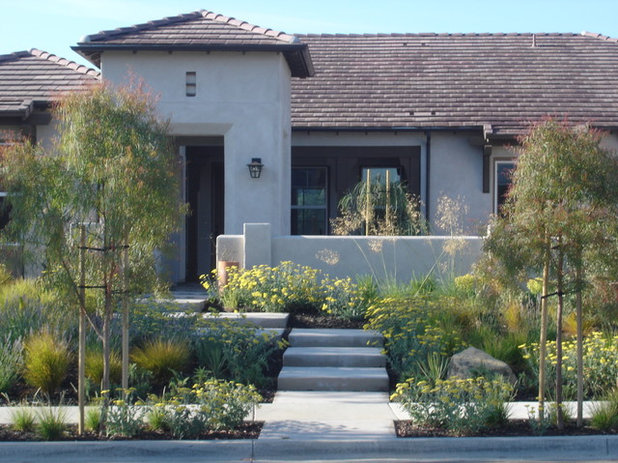
Jeffrey Gordon Smith Landscape Architecture
1. Shade the sidewalk. Consider placing a tree where it will shade the sidewalk to help create a pleasant environment and encourage walking and visiting among neighbors. Trees provide rain and sun protection, and temperature differentials of 5 to 15 degrees are felt when walking on tree-canopied streets. In urban areas trees help mitigate the heat-island effect and provide a connection to nature.
Most cities require permits for adding trees to a parkway (or hell strip), but permits are not usually required for planting on private property.
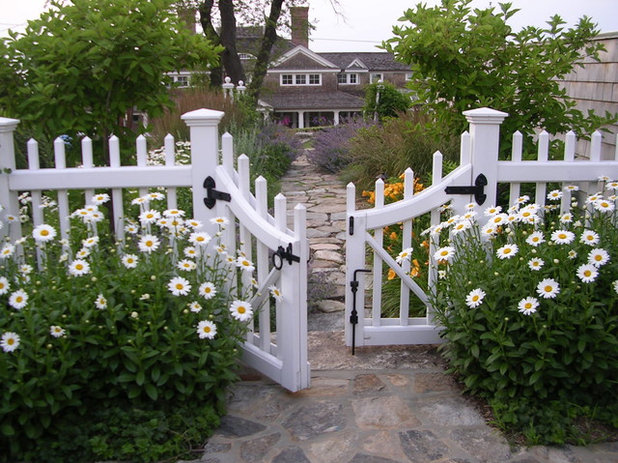
Sean Papich Landscape Architecture
2. Set the fence back. Placing a low fence or wall back a few feet from the edge of the sidewalk allows room for planting, and plants provide visual interest for pedestrians. In addition to cheerful daisies like these, velvety plants such as lamb’s ear (
Stachys byzantina) would work well.
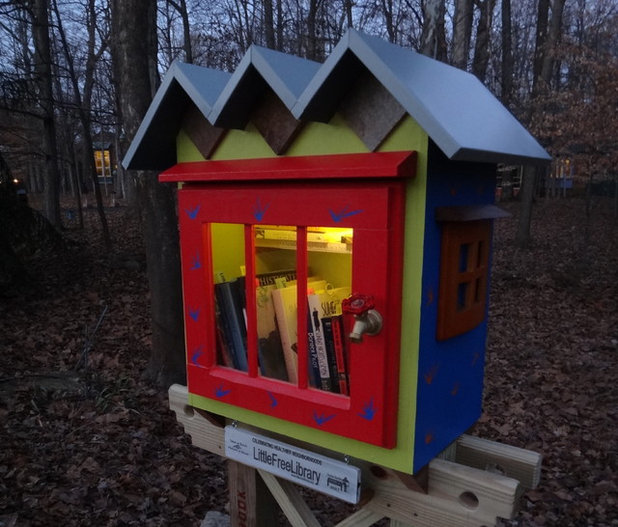
Jim Peterson Architect & Builder
3. Add a little free library. Folksy and fun, Little Free Libraries are small (dollhouse size) structures for the front yard that allow neighbors and friends to take books home to read and leave behind their own books as well. You can make your own library or purchase one ready-made through Little Free Library. There are over 2,000 Little Free Libraries throughout the U.S. and abroad.
More about Little Free Libraries | Little Free Libraries Take Manhattan
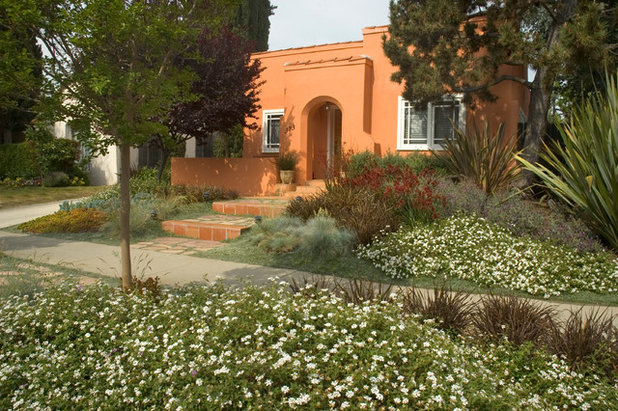
June Scott Design
4. Try the funnel effect. Increasing the width of your home’s central path or stairway can help guide visitors to your door. Here tiled stairs are double the width of the home’s porch opening to help direct visitors upward. The stairs’ deep risers also double as seating for friends and neighbors. Full of color and texture, low-water greenery is planted at an angle and carefully tiered to keep the views to the neighborhood open.
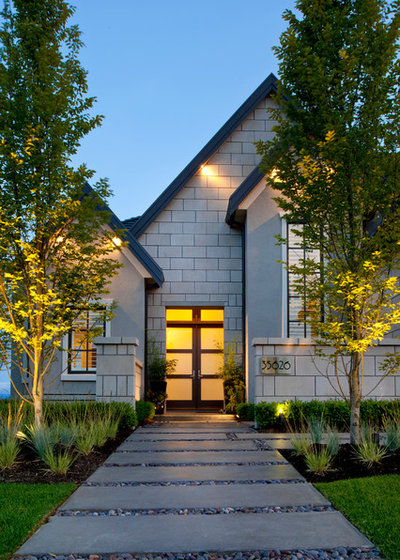
Revival Arts | Architectural Photography
5. Light the way. This one is a no-brainer. A means of welcoming visitors to your home at night, good lighting also adds to safety and to the attractiveness of a front garden. It’s also a proven deterrent to crime.
When lighting the front walk, take care to eliminate pools of light and darkness, which can be a hazard, particularly for elderly visitors. The goal is to have the walk evenly illuminated.
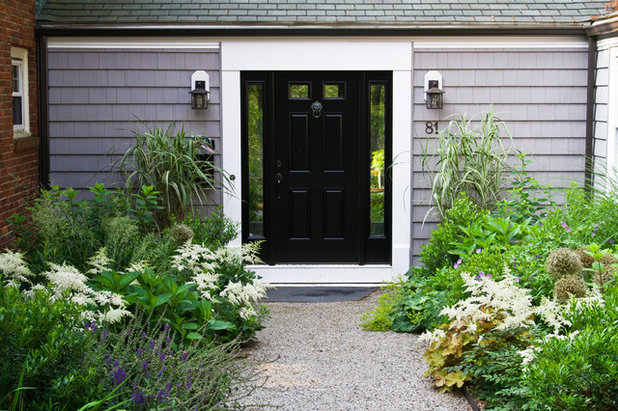
Matthew Cunningham Landscape Design LLC
6. Create interest with plants. What you would like the experience of your front garden to be for your friends and neighbors? Richly textured planting designs help define the mood of the garden. Consider using plants that are either native or adapted to the region in which your home is located. This can help tie your garden to your region, giving it an all-important sense of place, and make it more sustainable at the same time.
See how to grow plants native to your region on Houzz:
Northwest | California | Southwest | Texas | Rocky Mountains
Central Plains | Great Lakes | Northeast | Mid-Atlantic | Southeast
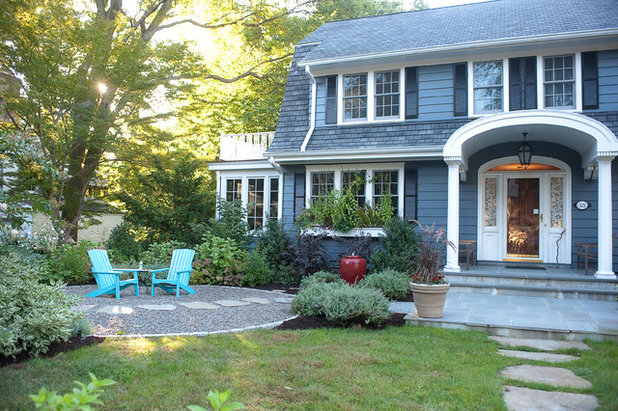
Westover Landscape Design, Inc.
7. Create a hangout space. Do you like the idea of relaxing on the porch, watching and talking to neighbors who pass by, but don’t have a front porch? No problem. A seating area in the front garden, perhaps nestled amongst mature trees, can be a welcoming spot in which to hang out with family or neighbors.
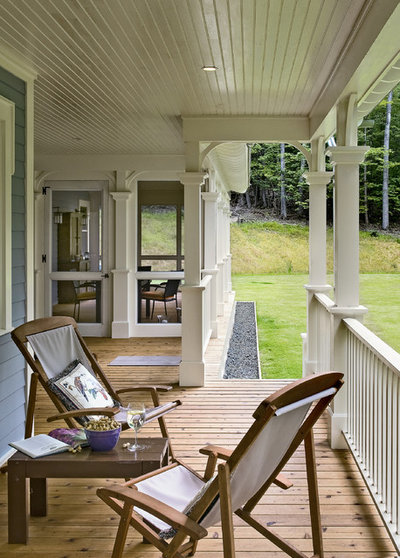
Crisp Architects
8. Add social seating. Outfit your porch for sociability — the more comfortable people are, the more likely they are to linger. And when they can face one another, they’ll be more likely enter into conversation. Tables that can hold food and drink provide another element of comfort.
Your turn: Have you outfitted your front yard for sociability? Let us know how in the Comments.





